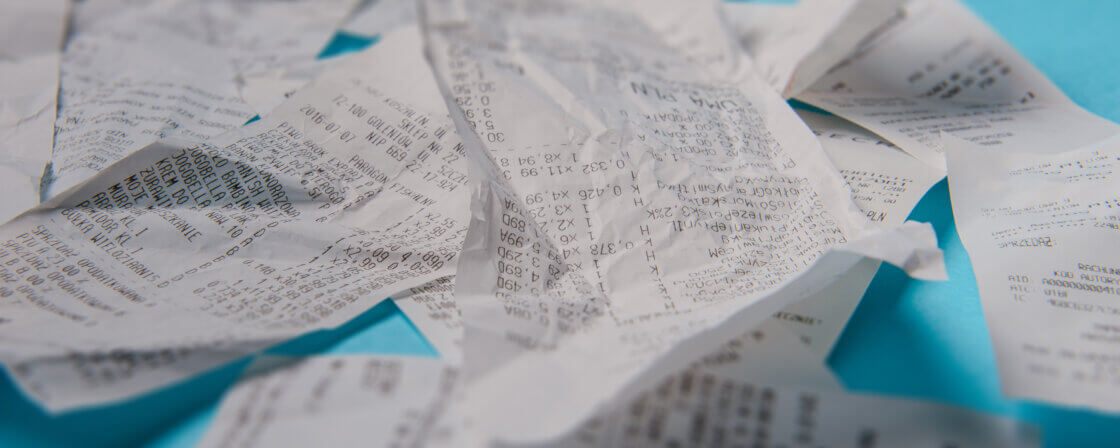What is a receipt?
A receipt (sometimes referred to as a receipt) is a written confirmation issued by a creditor that a debtor has fulfilled his or her obligation, usually by paying a debt. A receipt is a key document that protects the debtor from unjustified claims by a creditor who might claim that the debt has not been paid. A receipt is most commonly used for monetary obligations, but you can also have one made for other transactions, for example when you supply goods or services.
The debtor has a legal right to have a receipt issued by the creditor when the debt has been paid. If you owe someone and have already paid your debt, you should definitely ask for a receipt. It will be useful not only as a formality but also as legal proof that you have already met your financial or other obligations.
Are you solving a similar problem?
Need to issue a receipt and don't know how to do it?
Our law firm can also help you with this issue. A receipt as a legal document must contain certain formalities. We will make sure that you have the receipt in order and provide the debtor with a properly prepared document.
I want to use this service
- When you order, you know what you will get and how much it will cost.
- We handle everything online or in person at one of our 6 offices.
- We handle 8 out of 10 requests within 2 working days.
- We have specialists for every field of law.
Legal regulation of receipts in the Czech Republic
The receipt is enshrined in the Civil Code of the Czech Republic. According to this provision, the debtor has the right to demand a receipt from the creditor as proof that he has fulfilled his obligation. The debtor even has the right to withhold payment until the creditor issues the receipt.
The creditor is therefore obliged to issue the debtor with a receipt which clearly confirms that the specific debt has been paid in full. Should the creditor fail to fulfil this obligation, the debtor could not only withhold payment but also seek a receipt through legal proceedings. As a last resort, the creditor may face legal action and claims for damages if the lack of a receipt leads to damage to the debtor’s rights. So if you are on the creditor’s side and do not know how to issue a receipt or, on the other hand, if you as a debtor need to enforce a receipt, please contact our law firm.
The creditor is not obliged to issue a receipt unless the debtor requests it. If the debtor does not make the request, the creditor may decide not to issue the receipt.
What types of receipts are there?
There are several different types of receipts that are used depending on the type of transaction and the situation the debtor and creditor are in:
General Receipts
This receipt confirms that the debtor has paid the total amount of the debt. It is the most common type of receipt used when the obligation has been met in full. A general receipt is typically used for monetary obligations, but it can also be issued when other types of debts are discharged.
Partial receipt
If the debtor pays only part of the debt, the creditor issues a partial receipt, which only confirms the amount paid. This receipt should contain precise information on how much the debtor still has to repay. It is important that the partial receipt is clearly marked as such so that there is no misunderstanding that the debtor has settled the entire debt.
Special receipts
In some situations, it may be necessary to issue a specific type of receipt that relates to a particular type of contract, such as a lease agreement, loan agreement or purchase agreement. This type of receipt may contain more detailed information, such as the subject matter of the transaction, its quantity or quality.
What must the receipt contain?
A receipt must contain a few basic details to be valid and to be used as legal evidence. Key elements include:
- Identification of the creditor and debtor – the name and address of both parties.
- The exact amount – how much was paid.
- Date of payment – when the amount was paid.
- Purpose of the payment – what the amount was paid for, e.g. repayment of a debt under a contract.
- Creditor’s signature – ideally the document should be signed by both parties.
A properly completed receipt will ensure that both parties have a clear understanding of the performance of the obligation and that the receipt can be used as evidence in the event of any dispute.
Receipt form
Here is a sample of a simple receipt that you can use for various purposes. However, it is only recommended in simpler financial relationships, such as within the family etc. Otherwise, use the services of a solicitor who will professionally prepare the entire document for you.
Receipts
I, the undersigned [Name of Creditor], permanently residing at [Address of Creditor], acknowledge that on [Date] I received from [Name of Debtor], permanently residing at [Address of Debtor], the sum of [Amount] CZK in payment of the debt under the contract dated [Date of Contract].
At [Place], on [Date]
[Creditor’s signature]
This template serves only as a basic general overview of what a receipt may contain. You must adapt it to your specific situation. However, it is important that it is clear and understandable and contains all the necessary information. We recommend that you always consult a solicitor to be sure.
Tip for article
Tip: Let us draft your receipt and make sure that in the event of a legal dispute, your document will meet all the necessary requirements.
What is the difference between a receipt and a payment slip?
Receipts and receipts are two similar documents that have a similar function but may have different formalities. A receipt is more formal and is often used in legal relationships. In contrast, a receipt may be more informal. A receipt is more often used in commercial transactions, for example, when selling goods or services, whereas a receipt is more common in legal and financial relationships.
How to avoid problems with receipts
Keep a copy of the receipt
Keep all receipts as proof that the debt has actually been met. A receipt is an essential document that can be crucial in the event of litigation or discrepancies in the performance of obligations. You never know when it may come in handy as evidence.
Make sure the receipt is in writing
Although the law does not stipulate that a receipt must always be in writing, it is highly recommended that you always have one issued or in writing. A written receipt gives the debtor better protection and can easily be used as evidence.
Always request a receipt when repaying a debt
The debtor has the right to request a receipt from the creditor each time so that he has proof that he has fulfilled his obligation. If the creditor refuses to give the receipt, this is grounds for the debtor to withhold payment.
How to fill in a receipt correctly
- Fill in all the necessary details, such as the names and addresses of both parties.
- State the exact amount and date of payment.
- Always make sure that both the creditor and the debtor sign the receipt.
- Keep a copy of the receipt for your records so that you have it if you need it.
Summary
The receipt is an essential document that protects the debtor from unjustified claims by the creditor. A properly executed receipt or acknowledgement of payment of a debt is legally binding evidence of the fulfilment of an obligation. Keep all documentation related to your payments carefully to avoid future legal problems.
Receipts are important not only for debtors but also for creditors to ensure transparency and legal certainty in the fulfilment of obligations.




